The Florida Azalea, also known as the Orange Azalea, is a woody plant prized for its vibrant blooms that mark the arrival of spring in the southeastern United States. Scientifically named Rhododendron austrinum, this member of the Ericaceae family is native to the lower southeastern US and has been cherished for its ornamental appeal.
Renowned for its striking flowers that seem to float on air, the Florida Azalea offers a variety of captivating colors, making it a favorite for both solitary planting and group displays. This plant’s historical significance dates back to the 19th century when the first southern cultivar was introduced and planted on a South Carolina plantation. Since then, its radiant blossoms have inspired numerous festivals and parades across southern states, celebrating the arrival of this stunning harbinger of spring.
The Florida Azalea thrives as a houseplant, bringing a touch of natural beauty indoors or brightening gardens with its cheerful presence.
| Common name | Florida Azalea, Orange Azalea |
| Botanical name | Rhododendron austrinum |
| Family | Ericaceae |
| Species | austrinum |
| Origin | lower southeastern US |
| Life cycle | Woody |
| Plant type | Houseplant |
| Hardiness zone | 7, 8, 9 |
| Sunlight | Partial Shade |
| Maintenance | Low |
| Soil condition | High Organic Matter |
| Soil ph | Acid |
| Drainage | Well-Drained |
| Spacing | 6 – ft. – 12 ft. |
| Flowering period | Spring |
| Height | 8 ft. – 10 ft. |
| Flower color | Cream, Tan |
| Leaf color | Gold, Yellow |
| Fruit type | Capsule |
| Flower benefit | Fragrant |
| Uses | Houseplants |
| Toxicity | Poisonous |
I. Appearance and Characteristics
Rhododendron austrinum is a species of flowering plant in the heath family known by the common names Florida flame azalea, honeysuckle azalea, southern yellow azalea, and orange azalea. It is native to the southern United States, where it can be found in Alabama, Florida, Georgia, and Mississippi. It is also a common ornamental plant.
This species is a shrub growing up to 10 feet tall and 8 wide. It has deciduous oval leaves 2 to 4 inches long. It blooms profusely in large yellow or orange flowers which have a pleasant scent. The stamens protrude up to 2 inches from the flower’s mouth. The funnel-shaped flowers are borne in clusters of up to fifteen. The flowers come in before the new spring leaves emerge.

The plant is a common garden species because of its showy, fragrant flowers in shades of yellow or cream to nearly red. They attract hummingbirds and butterflies.
In the wild, the plant is a regional endemic occurring in and around the Florida Panhandle. It occupies moist and wet acidic substrates in ravines and other areas. It is threatened by the destruction of its habitat during conversion of the land to agriculture, silviculture, and other uses.
II. How to Grow and Care
Sunlight
Rhododendron austrinum need ample protection from wind and direct afternoon sun. Do not plant them in windy spots. Around buildings, they do best on the east or north side. In open areas, they like alternating sun and shade. Plants may survive continuous shade if trees have branches pruned high. Fences, shrubbery, or screens may also give protection from afternoon sun.
Temperature
In spring and summer, the ideal temperature for growth is 18–22 ° C. In autumn and winter, these plants goes to a rest period which last 1.5 – 2 months with a temperature of 12–15 ° C. Winter damage may occur at infrequent intervals, usually due to lack of dormancy in the plant when cold weather occurs. To help develop winter hardiness, avoid adding large amounts of nitrogen after July.
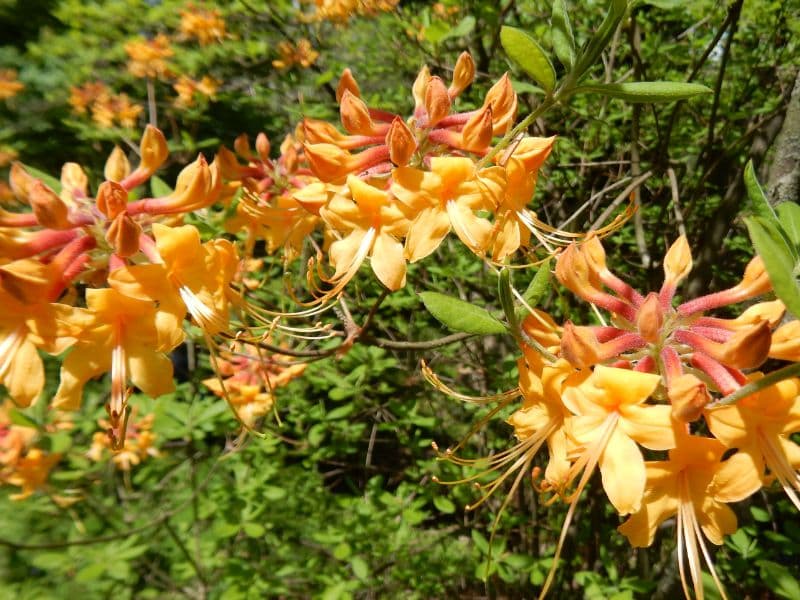
Watering
Orange Azalea need ample water during the summer. If they are planted under wide eave overhangs, furnish water during the entire year. Keep in mind that although these plants need moisture, they will not thrive in wet, poorly aerated soils.
Use mulches to control weeds, conserve moisture, and provide more uniform soil temperatures. Mulches can be made of sawdust, bark dust, peat moss, straw, or other organic materials. If these materials are incorporated into the soil after serving as a mulch, add some nitrogen to assist in decomposition of the woody materials.
Avoid excessive irrigation in fall. Plants kept dry in September will tend to harden off and be better prepared for the winter. If the fall has been excessively dry, watering should be done after the first killing frost. At that time watering will not reduce winter hardiness but will prepare the plant for winter. The soil should be thoroughly moist before cold weather sets in. The best time for fall watering is about Thanksgiving.
Soil
Orange azalea enjoys rich, loose, and slightly acidic soil. Because the plants do not like too much accumulated water, the soil must be well-drained. Leaf mold, pine needle mulch, peat soil, or fully decomposed groundwood are good choices. These are all acidic culture mediums with strong draining ability. Alkalic or sticky soil cannot be used.
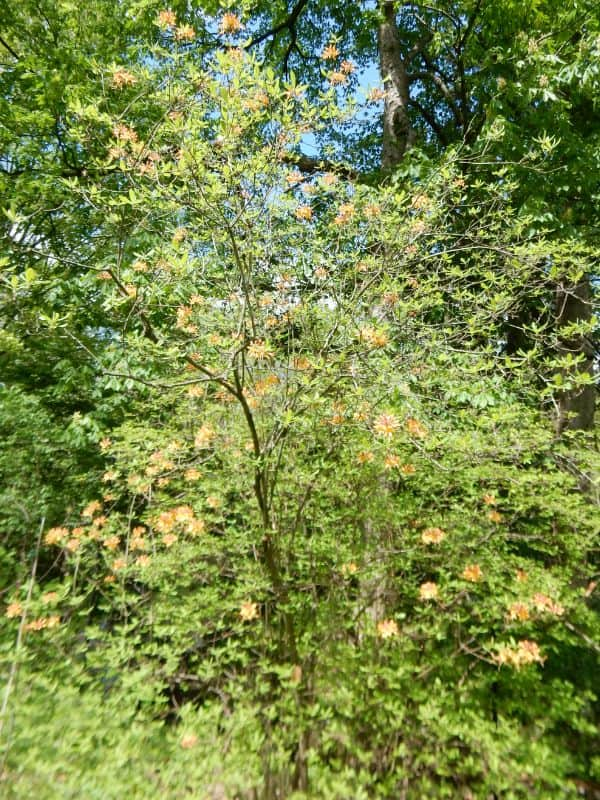
These plants are suited to soil with a pH of 4.5-6. Before planting, it is best to test the pH level of your soil. If it is slightly alkalic, you can moderately add an acidic fertilizer like aluminum sulfate. Mix it with the original soil, and ensure the soil is within the suitable pH range before planting orange azalea.
Fertilizing
Avoid the excessive use of lime or alkaline fertilizers around azalea and rhododendron plants. If necessary, apply nitrogen fertilizers or mixtures (either organic or inorganic) containing nitrogen, phosphorus, and potassium soon after flowering in the spring. Relative merits of an organic fertilizer as compared to a chemical fertilizer depend on whether the slow availability and less frequent application of the organic type can justify the extra cost.
A light application of a fertilizer formulated for acid-loving plants may be added to the surface before the mulch is applied. Fertilizing should be done in April or May, but don’t fertilize after July. Late summer fertilization may force out tender fall growth that will be killed by the winter.
Planting Instructions
Orange azalea is suited for planting in spring or fall. As a shrub, it takes a long time for the seeds to grow. Therefore, it is best to purchase seedlings or potted plants. If they are planted in the garden, make sure the distance between plants is 61 cm. Dig a planting pit with a diameter of three times that of the root ball of the orange azalea. The roots cannot be buried too deeply, and the root crown should be level with the ground. When the planting pit is half-filled with soil, water it once. When filling is completed, water it again.
Pruning

If new plants are selected properly, taking into consideration mature plant size and space to be filled, little pruning should be necessary. Remove dead and injured branches. If pruning is necessary, prune the plants soon after flowering to allow flower bud formation for the following year. “Dead-heading” is a pruning operation that involves removing spent flower clusters. It should be done annually.
The plants’ form can be improved by pinching out the soft, new shoots of vigorous growing plants. Do not pinch after July because flower buds will not have time to develop for the following year.
Propagation
Rhododendron austrinum can be propagated by air layering or stem cuttings. They can self-propagate by sending up shoots from the roots. Sometimes an attached branch that has dropped to the ground will root in damp mulch, and the resulting rooted plant then can be cut off the parent rhododendron. Cuttings may be made at any time, but June to July cuttings seem most ideal for rooting azaleas, and August to September cuttings seem best for rhododendrons.
Make cuttings 3 to 4 inches long, remove lower leaves, and place the cut end in the rooting medium. Equal parts of peat moss and clean sharp builder’s sand make an ideal rooting medium. After roots are formed, place the plants in pots or in a protected area and keep well watered.
III. Harvesting and Storage
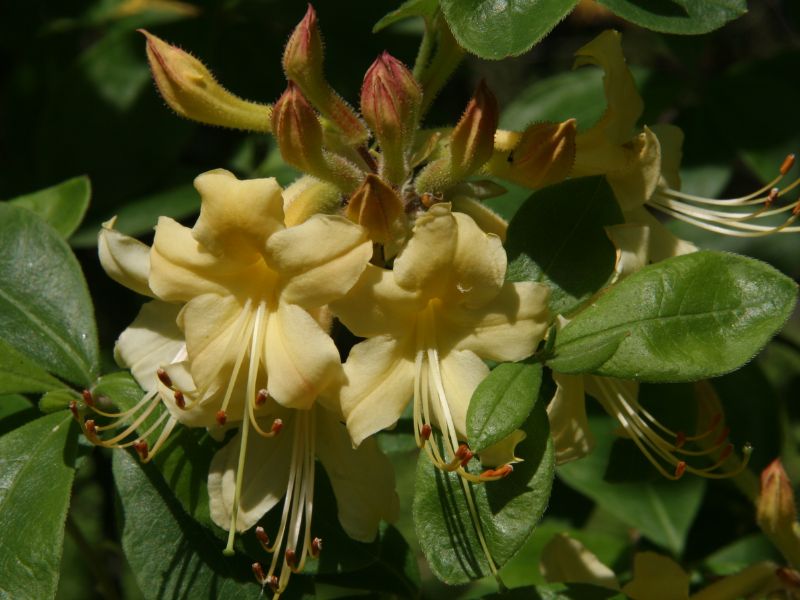
Collect the flowers of orange azalea for cut flowers, focusing on ones that have not yet fully bloomed. These flowers are both more beautiful and can be enjoyed for a longer period of time. Use a sharp knife to cut the bottom of the branch diagonally; this increases the area where the cut flower can absorb water. To extend bottle life, do not let the flowers receive direct sunlight. Change the water frequently and cut the bottom of the cut flower obliquely when changing water.
Find Where to Buy the Best Orange Azalea (Rhododendron austrinum)

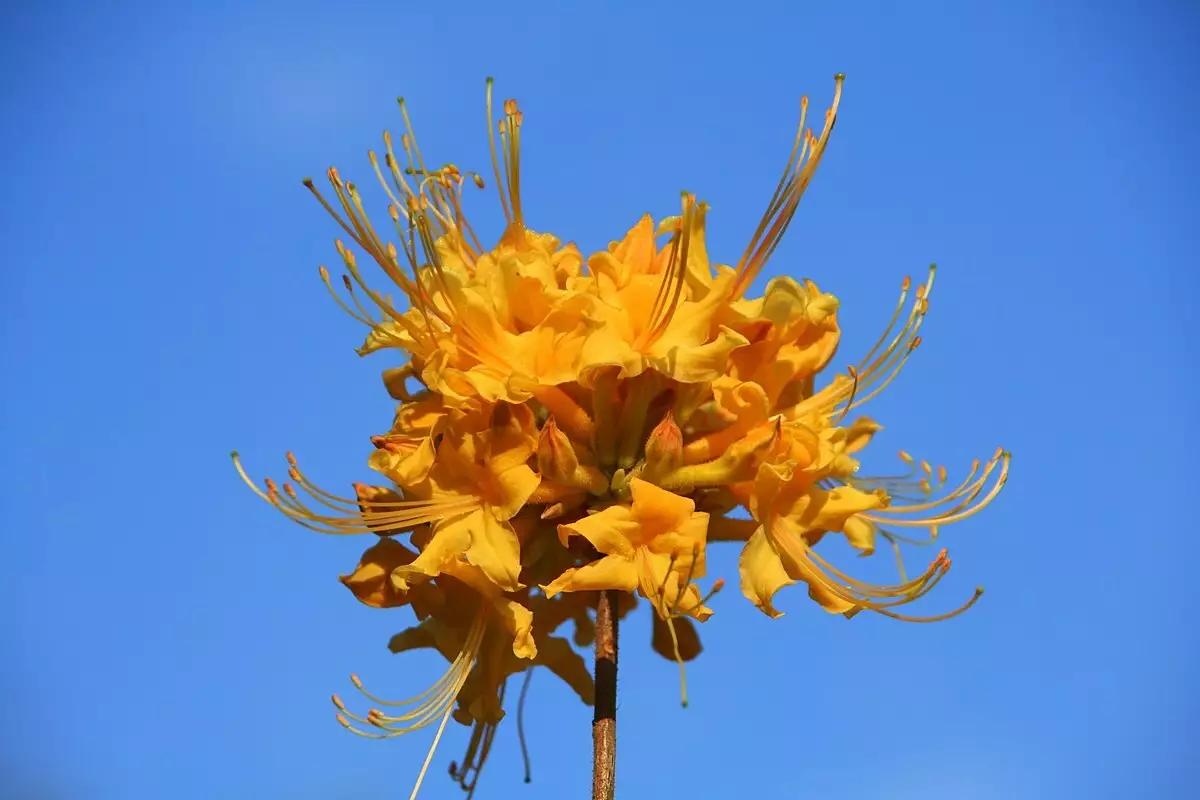








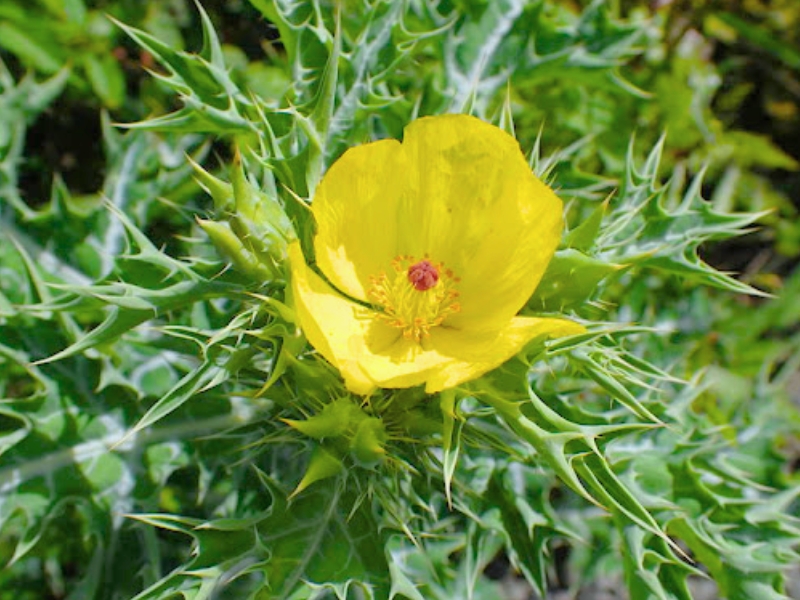
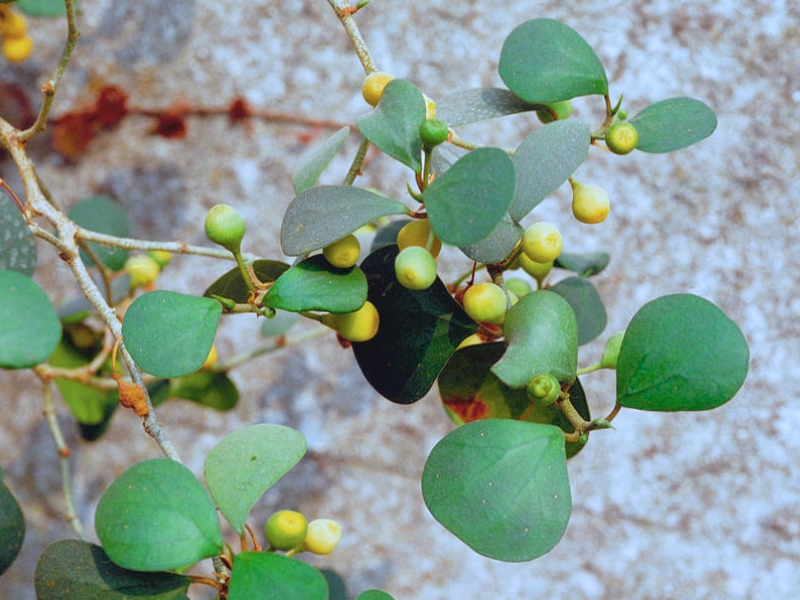
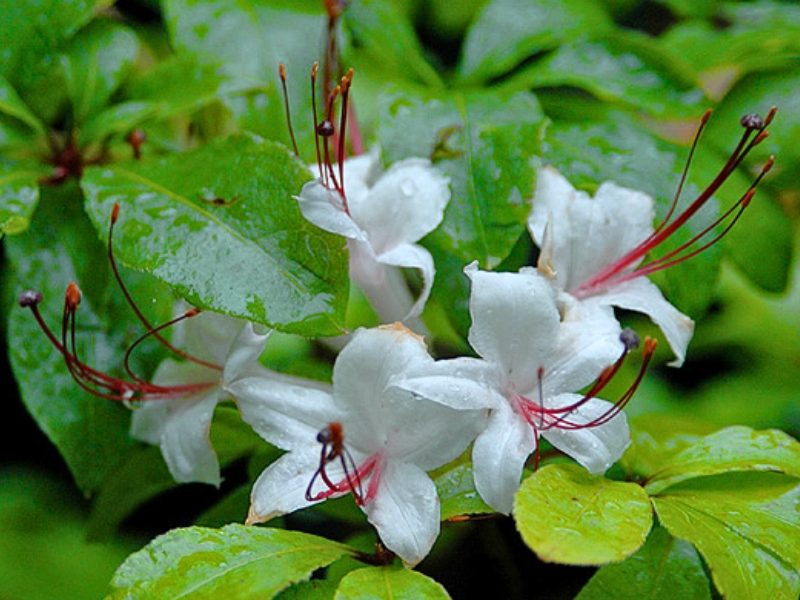
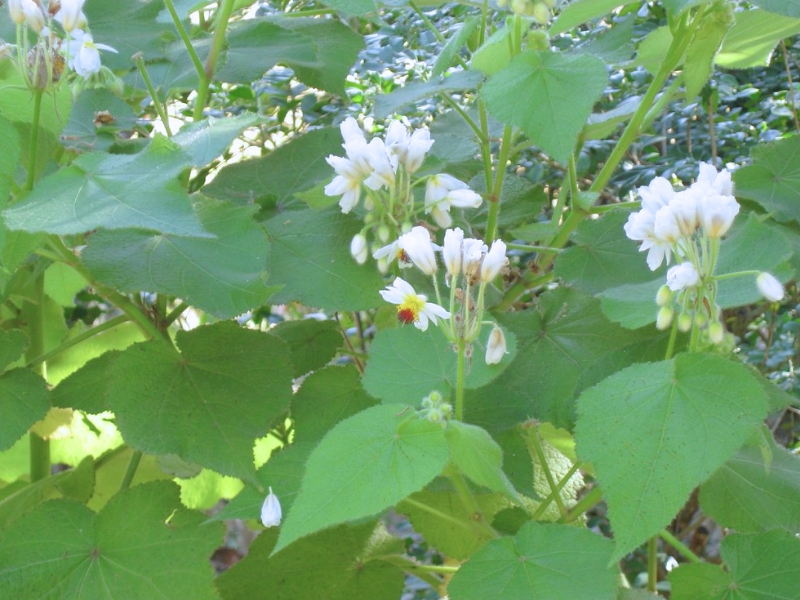
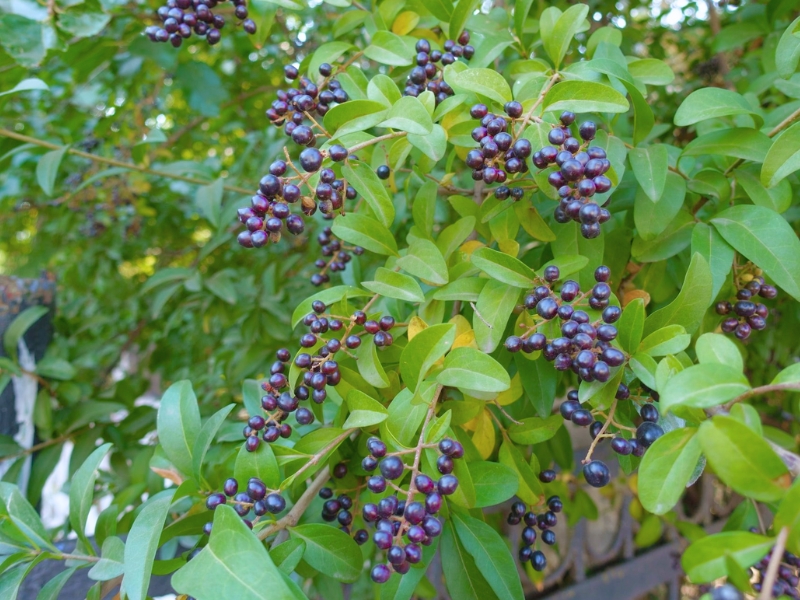
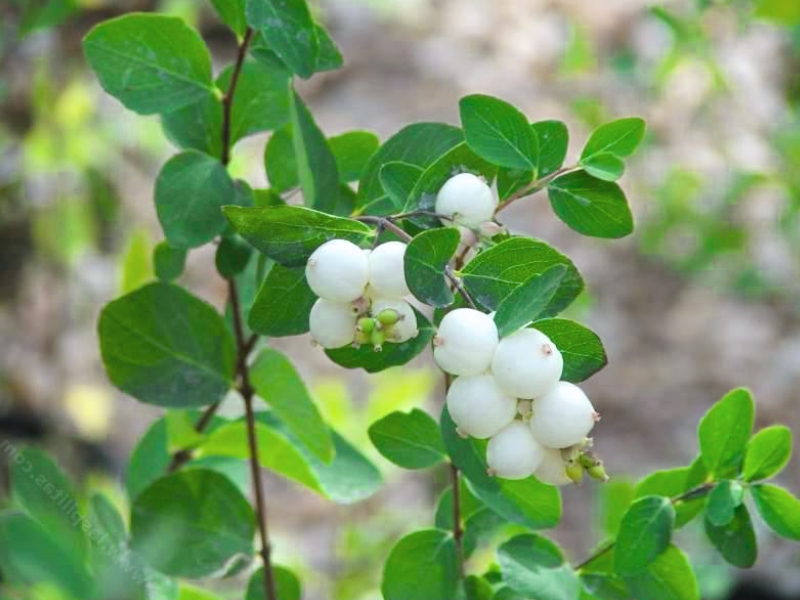
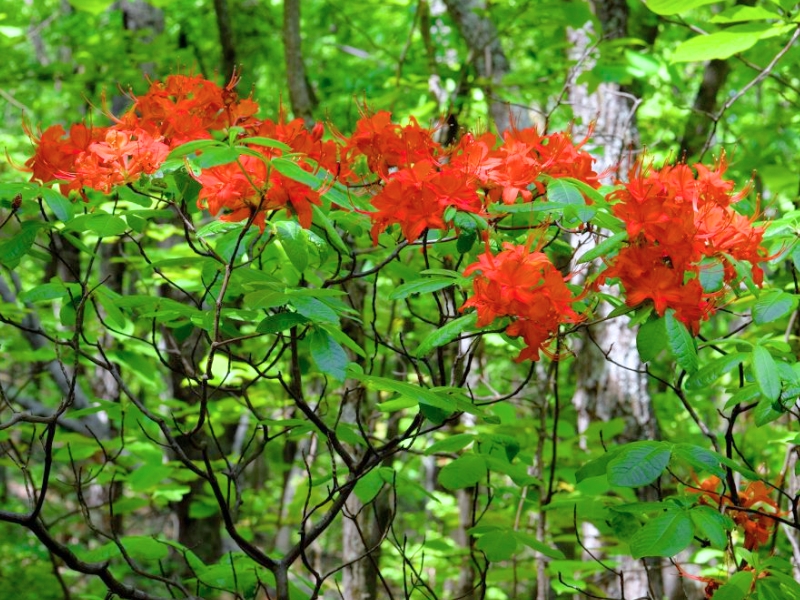
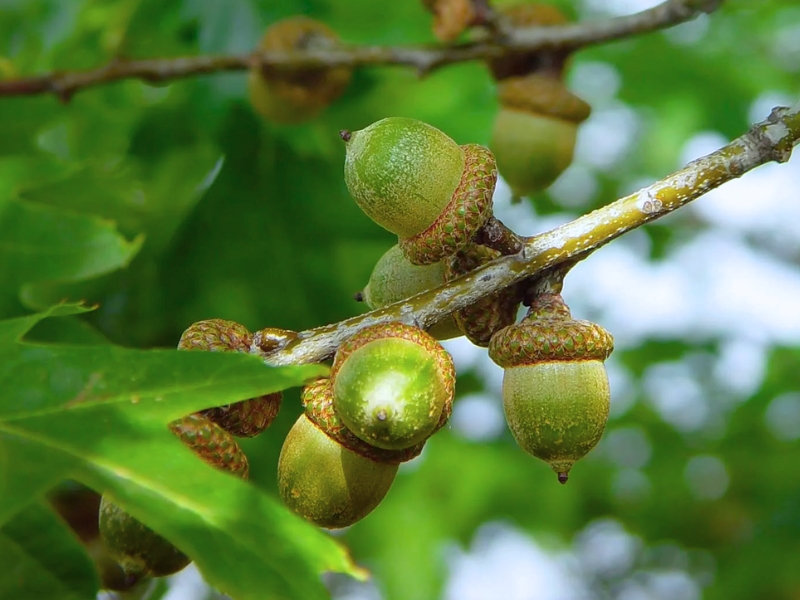
Leave a Reply